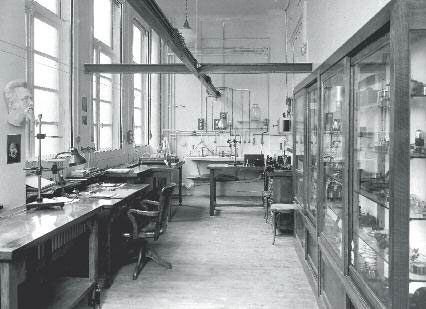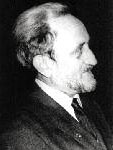History / E. de Rothschild Foundation
Chronology
Following the First World War, scientific research in France was in decline. This was is due to a lack of funding from the French government, but also due to strict adhesion to disciplinary straitjackets.
Many foundations, aimed at funding research through private donations thus emerged.
It was in this context that the IBPC was created in 1927

The cost of construction of the IBPC was 6 million francs (3.3 million euros in 2009). It was directly funded by the Baron Edmond de Rothschild.
At the head of the IBPC, were four leading researchers: Jean Perrin, Georges Urbain, Andre Mayer and Pierre Girard. When it opened in December 22, 1930, the Institute of Physico-Chemical Biology was hailed as the most modern in France.
While scientific disciplines had traditionally been kept separate to this point, IBPC became a place of free exchange, where the focus was on collective research, in contrast to conventional dictates.
In the spirit of the Tetrarchs, the IBPC served as a test bed for a comprehensive reform of French public research.
Pierre Perrin said in 1930:
My goal is that a scientist can have a full research career, without additional obligations.
There are at least three cases in which the creation of a research institution is needed: one in which the institution must be the refuge of research freedom, when it is threatened by an imposed conformity. Thus was born the College de France. The second is where we clearly need to house under the same roof men dedicated to the practice and application of science, and who cultivate this science themselves. Pasteur has designes and directed his Institute in this manner. The third case is where it is necessary to live and work alongside researchers from different disciplines to address problems that are at the common boundaries of these disciplines. This was what Baron Edmond de Rothschild wished to accomplish in founding this Institute.
André Mayer
During the second world war, the thirteen IBPC researchers who were free to move were assigned to laboratories working for national defense.
During the occupation, the IBPC reoriented towards applied research: development of a vaccine against typhus and improvements in insulin preparation from the pancreas.
In June 22, 1942, Pierre Girard received a requisition ordering that the buildings of the IBPC be handed over to the Carrel Foundation, a foundation that was very close to the Vichy regime. But he refused.
In recent years, several large public research organizations emerged following the CNRS: The National Institute of Hygiene - the predecessor of Inserm - in 1941, the Office of Atomic Energy in 1945 and the National Institute of Agricultural Research in 1946. All employed full-time researchers. All used a physico-chemical approach to study living organisms. The model proposed by the IBPC in the 1930 was a triumph.
 Francis Perrin, president of the Edmond de Rothschild Foundation in 1955-1975
Francis Perrin, president of the Edmond de Rothschild Foundation in 1955-1975
At the end of the war, the main founders of the IBPC died or resigned, leaving only Pierre Girard as director. The IBPC recruited new people and refocused its research on biology, as when it was created.
A series of research and important discoveries in biology and biochemistry followed, including the elucidation of the genetic code, completed in 1966.

In 1959, the DGRST became involved in the renovation of buildings of the IBPC and financed the construction of cutting-edge equipment for biophysical measurements.
In 1960, the IBPC expanded by opening two CNRS institutes in Gif-sur-Yvette, near Paris.
The idea to bring together biologists and physical chemists was new a half a century previously. It was now common practice, much more common than at its implementation. Regardless of all the good intentions and declarations, multidisciplinary approaches only work if the marriage between disciplines is actually consummated. Although we modestly believe that, in this Institute, the marriage was fruitful, the least we can say is that the marriage was happy.
Hubert Curien, during ceremonies for the 50th anniversary of the IBPC (1977)
From the 1940s, then gradually until 1978, IBPC's researchers were paid by the CNRS because the Rothschild Foundation was unable to bear sole resonsability for development needed at the IBPC.
Spanning over three quarters of a century, the history of IBPC has been marked by a great continuity. The approaches and methods of study change, but the themes remain.


